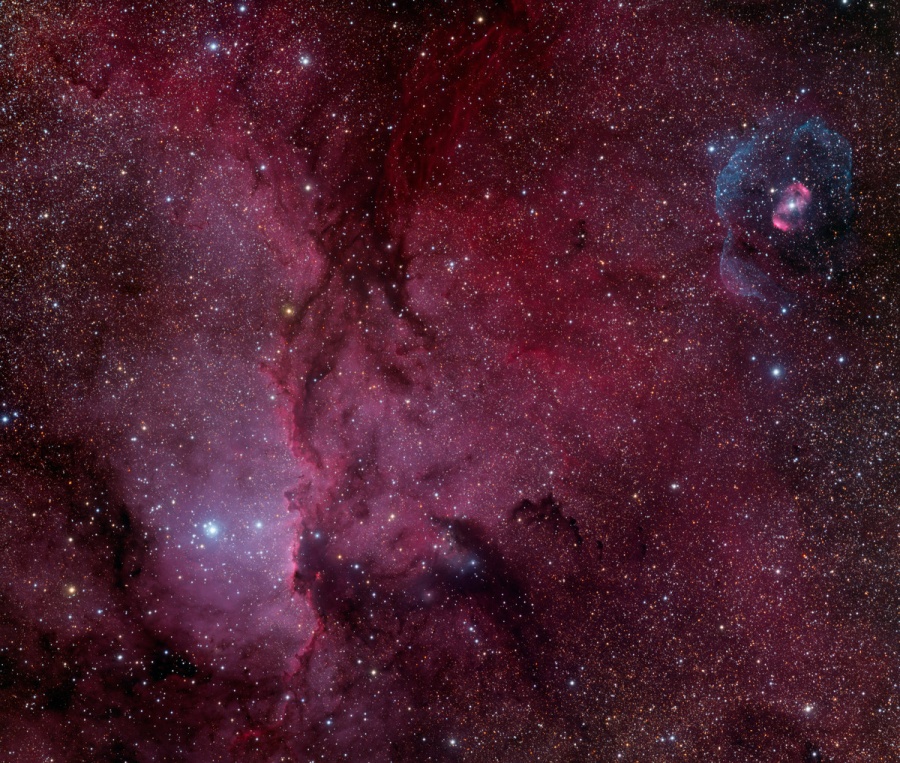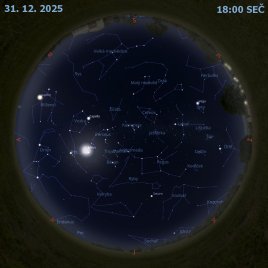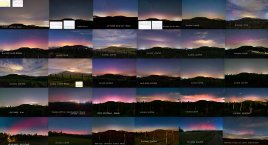NGC 6188 a NGC 6164

Uznání a copyright: Marco Lorenzi (Glittering Lights)
V mračnech zářícího vodíku v NGC 6188 číhají fantastické tvary. Tato emisní mlhovina se nachází u okraje velkého molekulárního mračna, které není vidět ve viditelných vlnových délkách a nachází se v jižním souhvězdí Oltáře (Ara), asi 4000 světelných let daleko. V OB1 asociacích v Oltáři jsou ponořeny mladé hmotné hvězdy, které v této oblasti vznikly před pouhými milióny let a jejichž temné tvary opracovává silná záře mlhoviny hvězdnými větry a ultrafialovou radiací. Samotný nedávný vznik hvězd byl nejspíše vyvolán větry a explozemi supernov z předchozí generace hmotných hvězd, které vymetly a stlačily molekulární plyn. K mlhovině NGC 6188 se na tomto kosmickém plátně připojila vzácná emisní mlhovina NGC 6164, která vznikla díky jedné z hmotných hvězd typu O z této oblasti. NGC 6164 se podobá mnoha planetárním mlhovinám včetně výrazně symetrické plynné obálky a slabého halo kolem její jasné centrální hvězdy vpravo nahoře. Zorné pole má dva úplňky a v odhadované vzdálenosti NGC 6188 odpovídá 70 světelných let.
NASA Official: Phillip Newman Specific rights apply. NASA Web Privacy Policy and Important Notices
A service of: ASD at NASA / GSFC & Michigan Tech. U.
Odkaz na originální APOD


